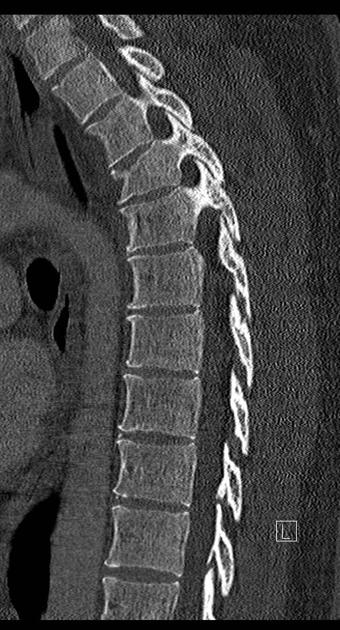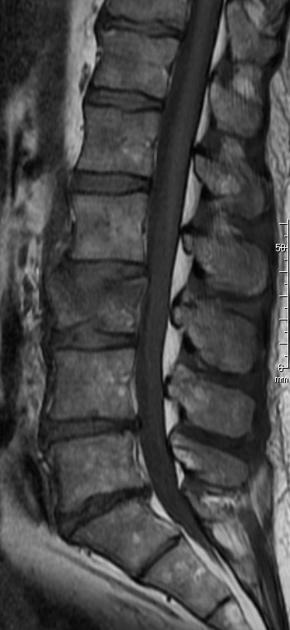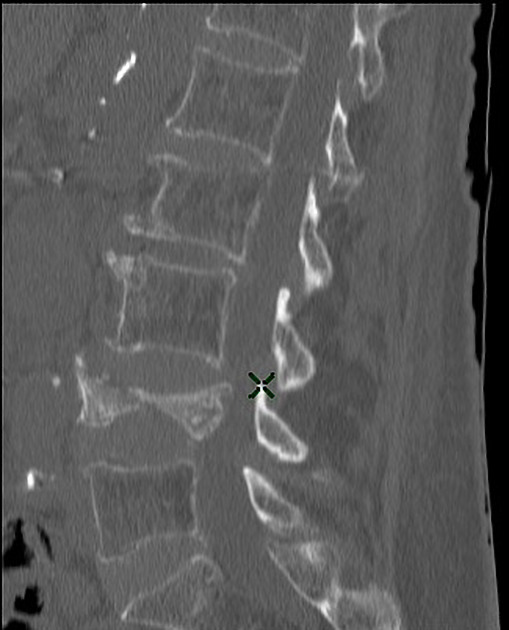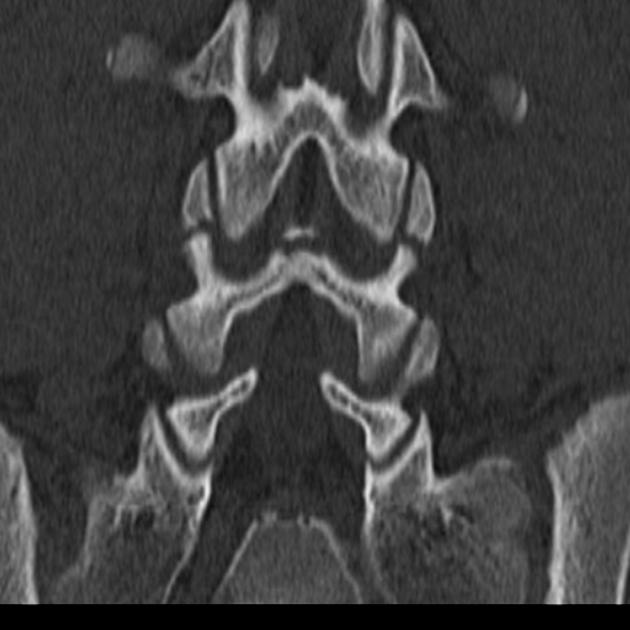Magerl classification of thoracolumbar spinal fractures (historical)
Citation, DOI, disclosures and article data
At the time the article was created Roberto Schubert had no recorded disclosures.
View Roberto Schubert's current disclosuresAt the time the article was last revised Arlene Campos had no financial relationships to ineligible companies to disclose.
View Arlene Campos's current disclosures- Thoraco-lumbar spinal fractures: Magerl classification
The Magerl classification, one of many thoracolumbar spinal fracture classification systems, was adopted as the original AO classification in 1994 but has since then been superseded: see the AO Spine classification of thoracolumbar injuries.
Usage
Although the Magerl classification is based on the three-column concept by Denis and the McAfee classification it has largely been superseded by more modern classification systems (particularly the AO Spine classification of thoracolumbar injuries and the thoracolumbar injury classification and severity score) whereas the terminology introduced by Denis and McAfee continue to be used in everyday clinical practice. ref
Classification
The Magerl classification relies exclusively on CT findings.
A: compression injuries
-
A1: impaction fractures
A1.1: endplate impaction
A1.2: wedge impaction
A1.3: vertebral body collapse
-
A2: split fractures
A2.1: frontal split fracture
A2.2: sagittal split fracture
A2.3: pincer fracture
-
A3: burst fractures
A3.1: incomplete burst fracture
A3.2: burst split fracture
-
A3.3: complete burst fracture
A3.3.1: pincer
A3.3.2: flexion
A3.3.3: axial
B: distraction injuries
-
B1: predominantly transligamentous flexion-distraction injury
-
B1.1: with transverse disc disruption
B1.1.1: flexion subluxation
B1.1.2: anterior dislocation
B1.1.3: B1.1.1 or B1.1.2 the with fractures of the articular processes
B1.2: with type A vertebral body fracture
-
-
B2: predominantly osseous flexion-distraction injury
B2.1: transverse bi column fracture
-
B2.2: posterior osseous disruption with transverse disc disruption
B2.2.1: through the pedicles
B2.2.2: through the interarticular portions (flexion spondylolysis)
-
B2.3: with type A vertebral body fracture
B2.3.1: through the pedicles
B2.3.2: through the isthmus
-
B3: anterior disruption through the disc
B3.1: hyperextension-subluxation
B3.2: hyperextension-spondylolysis
B3.3: posterior dislocation
C: torsion injuries
-
C1: rotation-compression injury
C1.1: impaction
C1.2: split
C1.3: burst
-
C2: rotation-distraction injury
C2.1: with transligamentous flexion-distraction
C2.2: with transosseous flexion-distraction
C2.3: with hyperextension-distraction
C3: rotational shear injury
References
- 1. Magerl F, Aebi M, Gertzbein S, Harms J, Nazarian S. A Comprehensive Classification of Thoracic and Lumbar Injuries. Eur Spine J. 1994;3(4):184-201. doi:10.1007/BF02221591 - Pubmed
- 2. Denis F. The Three Column Spine and Its Significance in the Classification of Acute Thoracolumbar Spinal Injuries. Spine (Phila Pa 1976). 1983;8(8):817-31. doi:10.1097/00007632-198311000-00003 - Pubmed
- 3. McAfee P, Yuan H, Fredrickson B, Lubicky J. The Value of Computed Tomography in Thoracolumbar Fractures. An Analysis of One Hundred Consecutive Cases and a New Classification. J Bone Joint Surg Am. 1983;65(4):461-73. - Pubmed
Incoming Links
Related articles: Fractures
-
fracture
- terminology
- fracture location
- diaphyseal fracture
- metaphyseal fracture
- physeal fracture
- epiphyseal fracture
- fracture types
- avulsion fracture
- articular surface injuries
- complete fracture
- incomplete fracture
- infraction
- compound fracture
- pathological fracture
- stress fracture
- fracture displacement
- fracture location
- fracture healing
- skull fractures
-
facial fractures
- fractures involving a single facial buttress
- alveolar process fractures
- frontal sinus fracture
- isolated zygomatic arch fractures
- mandibular fracture
- nasal bone fracture
- orbital blow-out fracture
- paranasal sinus fractures
- complex fractures
- dental fractures
- fractures involving a single facial buttress
-
spinal fractures
- classification (AO Spine classification systems)
-
cervical spine fracture classification systems
- AO classification of upper cervical injuries
- AO classification of subaxial injuries
- Anderson and D'Alonzo classification (odontoid fracture)
- Roy-Camille classification (odontoid process fracture)
- Gehweiler classifcation (atlas fractures)
- Levine and Edwards classification (hangman fracture)
- Allen and Ferguson classification (subaxial spine injuries)
- subaxial cervical spine injury classification (SLIC)
- thoracolumbar spinal fracture classification systems
- three column concept of spinal fractures (Denis classification)
- classification of sacral fractures
-
cervical spine fracture classification systems
- spinal fractures by region
- spinal fracture types
- classification (AO Spine classification systems)
- rib fractures
- sternal fractures
-
upper limb fractures
- classification
- Rockwood classification (acromioclavicular joint injury)
- AO classification (clavicle fracture)
- Neer classification (clavicle fracture)
- Neer classification (proximal humeral fracture)
- AO classification (proximal humeral fracture)
- AO/OTA classification of distal humeral fractures
- Milch classification (lateral humeral condyle fracture)
- Weiss classification (lateral humeral condyle fracture)
- Bado classification of Monteggia fracture-dislocations (radius-ulna)
- Mason classification (radial head fracture)
- Frykman classification (distal radial fracture)
- Mayo classification (scaphoid fracture)
- Hintermann classification (gamekeeper's thumb)
- Eaton classification (volar plate avulsion injury)
- Keifhaber-Stern classification (volar plate avulsion injury)
- upper limb fractures by region
- shoulder
- clavicular fracture
-
scapular fracture
- acromion fracture
- coracoid process fracture
- glenoid fracture
- humeral head fracture
- proximal humeral fracture
- humeral neck fracture
- arm
- elbow
- forearm
- wrist
-
carpal bones
- scaphoid fracture
- lunate fracture
- capitate fracture
- triquetral fracture
- pisiform fracture
- hamate fracture
- trapezoid fracture
- trapezium fracture
- hand
- shoulder
- classification
- lower limb fractures
- classification by region
- pelvic fractures
- hip fractures
- Pipkin classification (femoral head fracture)
- Garden classification (hip fracture)
- American Academy of Orthopedic Surgeons classification (periprosthetic hip fracture)
- Cooke and Newman classification (periprosthetic hip fracture)
- Johansson classification (periprosthetic hip fracture)
- Vancouver classification (periprosthetic hip fracture)
- femoral
- knee
- Schatzker classification (tibial plateau fracture)
- AO classification of distal femur fractures
- Meyers and McKeevers classification (anterior cruciate ligament avulsion fracture)
- tibia/fibula
- Watson-Jones classification (tibial tuberosity avulsion fracture)
- ankle
- foot
- Berndt and Harty classification (osteochondral lesions of the talus)
- Sanders CT classification (calcaneal fracture)
- Hawkins classification (talar neck fracture)
- Myerson classification (Lisfranc injury)
- Nunley-Vertullo classification (Lisfranc injury)
- pelvis and lower limb fractures by region
- pelvic fracture
- sacral fracture
- coccygeal fracture
-
hip
- acetabular fracture
- femoral head fracture
-
femoral neck fracture
- subcapital fracture
- transcervical fracture
- basicervical fracture
-
trochanteric fracture
- pertrochanteric fracture
- intertrochanteric fracture
- subtrochanteric fracture
- femur
- mid-shaft fracture
- bisphosphonate-related fracture
- distal femoral fracture
- knee
- avulsion fractures
- Segond fracture
- reverse Segond fracture
- anterior cruciate ligament avulsion fracture
- posterior cruciate ligament avulsion fracture
- arcuate complex avulsion fracture (arcuate sign)
- biceps femoris avulsion fracture
- iliotibial band avulsion fracture
- semimembranosus tendon avulsion fracture
- Stieda fracture (MCL avulsion fracture)
- patellar fracture
- tibial plateau fracture
- avulsion fractures
- leg
- tibial tuberosity avulsion fracture
- tibial shaft fracture
- fibular shaft fracture
- Maisonneuve fracture
- ankle
- foot
- tarsal bones
- metatarsal bones
- phalanges
- classification by region
- terminology
Related articles: Spinal trauma
-
spinal fractures
- morphology
- fractures by location
- cervical spine fracture
- thoracolumbar spine fracture
- sacral fracture
- classifications
- AO spine classification systems
- three column concept of spinal fractures (Denis classification)
-
cervical spine fracture classification systems
- upper cervical spine
- AO Spine classification of upper cervical injuries
- occipital condyle and occipital cervical junction
- atlas (C1) and C1-2 joint
- axis (C2) and C2-3 joint
- Roy-Camille classification (dens)
- Anderson and D'Alonzo classification (dens)
- Levine and Edwards classification (pars interarticularis)
- subaxial cervical spine
- upper cervical spine
- thoracolumbar spinal fracture classification systems
- classifications of sacral fractures
- facet dislocation
- listhesis










 Unable to process the form. Check for errors and try again.
Unable to process the form. Check for errors and try again.